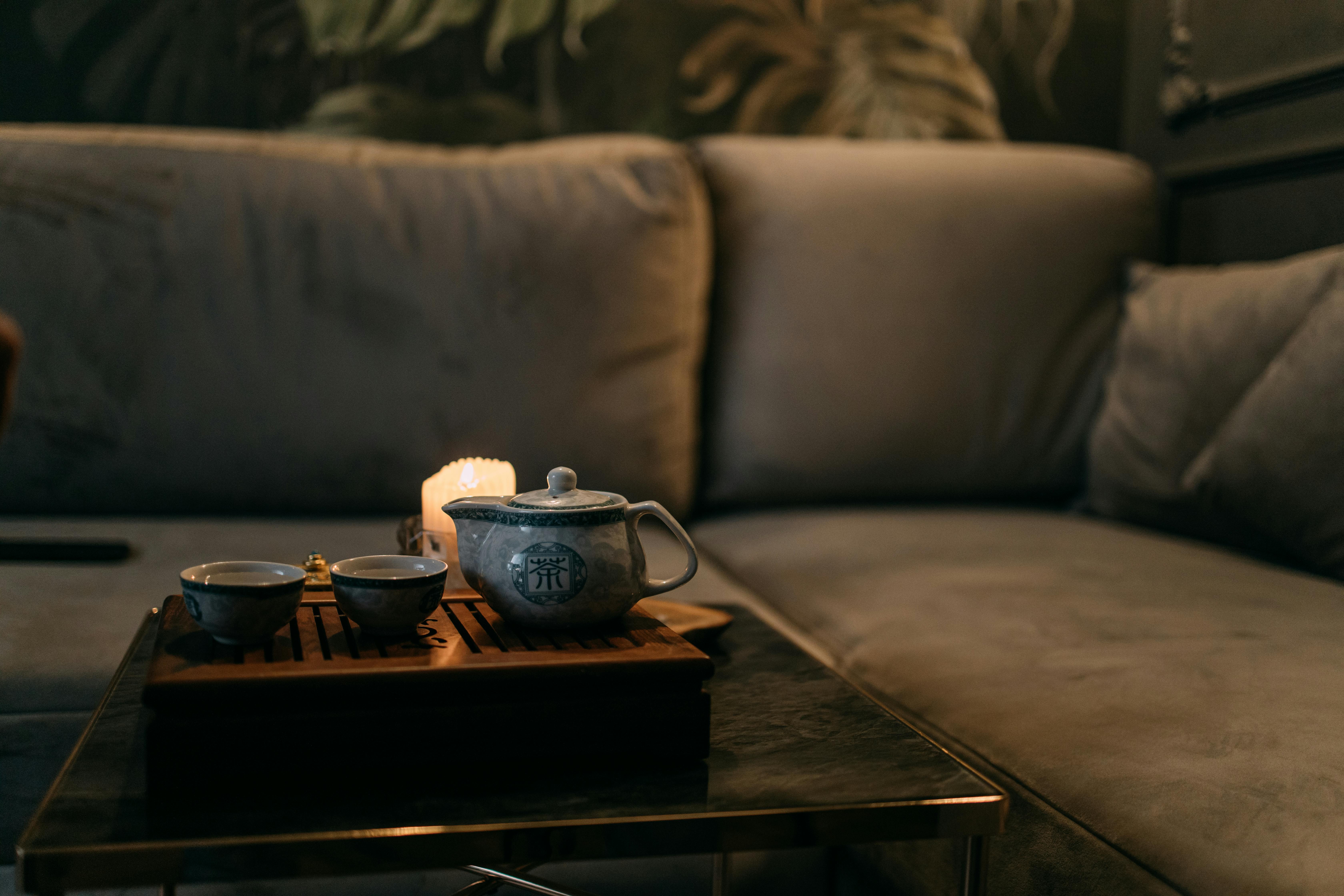As an affiliate, I earn from qualifying purchases, but this doesn't affect the reviews or recommendations—your trust is important to me!
Creating Your Own Lava Lamp: A Fun DIY Experiment

Today, We're Making:
- - DIY Lava Lamp Experiment
- - 'Future Dish Garden': Let kids get a taste of botany and climate studies. In this project, children can set up a mini garden at home and experiment with different planting conditions, such as varying light and temperature, or using different soils. On April 29, 2025.
Remember the mesmerizing dance of colorful blobs in a glass tube from your childhood?
Yes, I'm talking about that nostalgic lava lamp. Now imagine, what if you could recreate that enchanting dance right at your home?
What if your children could take part in it, learning science while having fun?
Welcome to our fascinating DIY Lava Lamp Experiment! This ideal blend of art and science offers you a unique opportunity to create a homemade lava lamp, providing a glimpse into the world of density and immiscibility.
It's not just a fun DIY project for kids - it's a great opportunity to spark imagination, learn, and create a mesmerizing, bubbly, and colorful masterpiece!
So roll up your sleeves, it's time to dive into the fascinating world of science experiments at home!
Diving into the DIY Lava Lamp Experiment
The process behind our DIY Lava Lamp Experiment is nearly as enchanting as the creation itself. It's an opportunity not only to create a unique lighting feature but to turn your kitchen or living room into a mini-science lab. Let's delve into the step-by-step guide to this fun DIY project and transform your home into an immersive, hand-on learning environment.
First of all, gathering the required ingredients and materials is a great way to involve the kiddos from the get-go. You'll need a clear glass or a plastic container, water, food coloring, vegetable oil, and effervescent tablets (like Alka-Seltzer). It's a simple shopping list, making it one of the easiest DIY projects you can engage with. Always ensure to supervise any science experiments for kids, for this homemade lava lamp experiment is no exception.
How To Make Your Own Lava Lamp: Step-by-Step Guide
Now onto the exciting part! The creation of your homemade lava lamp. This is where the science starts to sparkle, and the magic starts to flourish. The lava lamp instructions are simple and clear, ensuring to awaken the little scientists within your children.
- Fill your chosen container about 1/4 full with water. Add the food coloring of your choice. The more vibrant, the better - a colorful lava lamp always entices!
- Carefully pour the vegetable oil into the container until it's almost full. Leave some room at the top. Now, you'll observe something pretty fascinating. The oil and water will separate, displaying an incredible example of how 'immiscible' liquids behave.
- Here's where the 'lava' in your lava lamp project comes to life. Break and drop in an effervescent tablet. Prepare to watch the beautiful bubbly reaction take place! The blobs of colored water will start rising and falling, mimicking the enchanting dance we all remember in the classic lava lamp.
This DIY Lava Lamp Experiment brings a new dimension to home experiments. It's not only a fun DIY project that results in visually pleasing homemade light, but it's a perfect opportunity to tap into creativity, explore the connection between science and art, and spend quality time with family.

DIY Lava Lamp Experiment: Transforming Homes into Mini Labs
And so, as our homes transform into mini laboratories and our children into budding scientists, the DIY Lava Lamp Experiment stands as a testament to the joy and wonder of learning. This simple yet creative project breathes life into science, proving that it is not a distant, hard-to-grasp concept, but a fascinating world full of color and magic.
It's creations like this homemade lava lamp that make the journey of discovery more enjoyable, sparking curiosity and triggering exploration. Remember, learning can glow, bubble, rise and fall, just as beautiful as the dance in a lava lamp. So let's keep the lights of curiosity glowing in our homes, sparking illuminating conversations with our children, and shaping the scientists of tomorrow.

You May Also Like These:
Future Dish Garden Project
Let your kids delve into the world of botany and climate studies with the Future Dish Garden Project. This simple yet intriguing STEM project encourages the young ones to explore and better understand our environment. Here's how you can begin.
Ingredients
- A glass container (a fish bowl or a glass vase)
- Small pebbles or gravel for drainage
- Potting soil suitable for indoor plants
- Miniature indoor plants
- A sheet of plastic wrap
- A spray bottle filled with water
Instructions
- Prepare Your Container: Start by pouring a layer of small pebbles or gravel into the bottom of the fishbowl or vase for drainage. Approximately 1/3 of the container should be filled with this layer.
- Add Soil: Next, add a layer of potting soil over the top of the pebbles. The thickness of this layer would be dependent on the root size of your selected plants. An approximate guide would be 2/3 of the container.
- Arrange the Plants: Carefully place your chosen miniature indoor plants into the soil. With this step, kids can be creative and design their garden as they wish.
- Watering: Gently water the plants using the spray bottle. Be sure not to saturate the soil, it should be moist not wet.
- Cover with Plastic Wrap: Finally, cover the dish garden with a sheet of plastic wrap. This functions as a miniature greenhouse, helping to maintain humidity and create a balanced ecosystem within your future dish garden.
Once complete, place the future dish garden in a spot that gets indirect sunlight and watch as it grows and flourishes over the coming weeks. Not only would your kids have a fun time creating it, but they will also learn more about climate, photosynthesis, and plant biology.
Ingredients:
- Thermometer: For measuring temperature
- Light bulb and holder: To provide light and heat
- Thermally insulated box: To control the environment
- Tasks & Data sheet: To record changes
Instructions:
- Step 1: Place the thermometer and light bulb inside the thermally insulated box.
- Step 2: Switch on the light bulb.
- Step 3: Observes and record the temperature every 5 minutes for 30 minutes.
- Step 4: After recording, switch off the light and let the box cool down.
- Step 5: Once the box has cooled down to its original temperature, replace the bulb with one of a different wattage.
- Step 6: Repeat Steps 2-4.
- Step 7: Finally, analyze and compare the results.
Note: Always supervise children during the experiment to ensure safety because light bulbs can get hot.
STEM Project: Varying Light and Temperature
Ingredients:
- 1 Digital Thermometer
- 1 Colored Light Bulbs (Red, Blue, and Green)
- 1 Plant Seedling
- 1 Indoor Plant Pot
- 1 Lamp
- Plant Soil
- Water
Instructions:
- Setup the Experiment: Find a stable location for your lamp and plant pot. There should be enough space for the lamp to shine directly onto the plant without obstruction.
- Plant your Seedling: Plant your seedling in the indoor plant pot with plant soil.
- Measure Initial Temperature: Use your digital thermometer to measure the initial temperature in the location of the experiment.
- Apply Light Source: Choose a colored light bulb and place it in the lamp. Turn on the lamp for a consistent amount of time each day (example: 4 hours).
- Monitor & Record Changes: After each session of light exposure, use the digital thermometer to measure and record the temperature. Record the growth of the plant in terms of height or number of leaves.
- Repeat with Different Light Source: After a reasonable amount of time (one or two weeks), repeat the same process with a different colored light bulb. Record all findings.
- Analyzing Results: At the end of testing all colored light bulbs, compare your findings. Determine how different light sources affect plant growth and temperature.
Remember:
Always handle the plant, thermometer, and light bulbs with care. The collected data can be visualized in the form of charts or tables to show the effect of different light colors on plant growth and temperature.
STEM Projects: Experimenting with Different Soils
Ingredients:
- 3 different types of soil (For example, clay, loamy and sandy soil)
- 3 small, clear containers
- Water
- Seeds (for example, bean seeds)
- Notebook and pen for observations
Instructions:
- Step 1: Begin by filling each container with one type of soil.
- Step 2: Gently pat down the soil in each container.
- Step 3: Make a small hole in the center of each soil type and place your seed inside, then cover the seed with soil.
- Step 4: Slowly pour water into each container - making sure to not overwater! (We want to observe the way water drains through different soil types.)
- Step 5: Place your containers in a sunny spot and observe what happens over time. Note: Some soil types may need more or less water, and the seeds may grow at different rates!
- Step 6: Make sure to jot down your observations in your notebook. You could note things like how fast or slow water drains, how long it took for your seeds to sprout, or the differences in the plants as they grow.
Blue Squid Robot STEM Project
Ingredients
- Two DC Motors
- One Arduino Uno Board
- One Breadboard
- Four Wheels
- Connection Wires
- One 9V Battery
- One Battery Clip
- One Chassis (base for the robot)
Instructions
Step 1: Wiring the DC Motors
Carefully connect the two DC motors to the breadboard.
Step 2: Powering the Motors
Use connection wires to connect the breadboard to the Arduino Uno Board.
Step 3: Installing the Motors and Wheels on the Chassis
Attach the DC motors to the chassis, ensuring the wheels are correctly aligned and move freely.
Step 4: Connecting the Battery
Connect the 9V battery to the Arduino Uno Board using the battery clip.
Step 5: Programming the Robot
Use your computer to program the Arduino Uno Board. This will allow you to control the movement of the robot.











